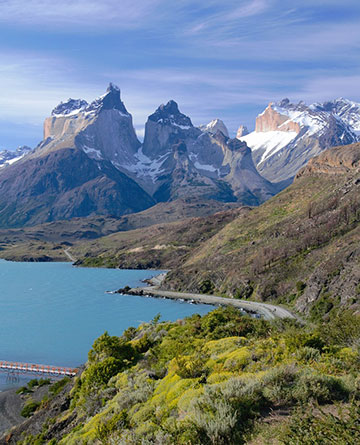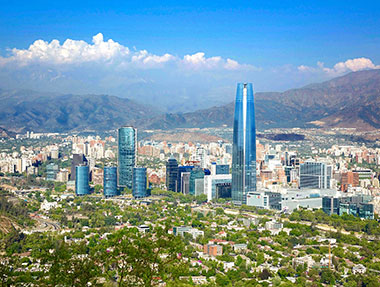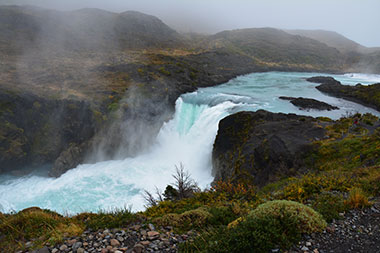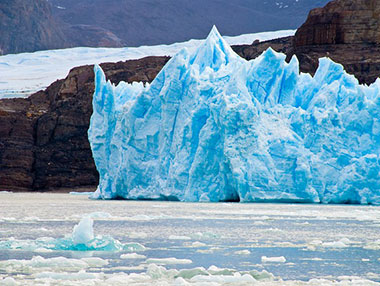Galapagos Islands
Explore the Enchanting Galapagos Islands
The Galapagos Islands, a volcanic archipelago straddling the equator 600 miles off the coast of Ecuador, are a living testament to evolution's grand experiment. Here, on these rugged islands bathed in sunshine, iguanas sunbathe alongside marine iguanas, giant tortoises lumber across lava fields, and blue-footed boobies strut their stuff in a comical mating dance. It's a place where wildlife is unafraid, where time seems to stand still, and where every turn unveils a new wonder.
Encounters that Will Leave You Breathless
Iguanas: Witnessing these prehistoric-looking reptiles clumsily clambering over volcanic rocks, sneezing out excess salt, and basking in the sun is a sight to behold.
Giant Tortoises: These gentle giants, some living for over 100 years, roam freely, munching on vegetation and inspiring awe with their prehistoric presence.
Blue-footed Boobies: Watch as these graceful birds take flight, displaying their vibrant blue feet in an aerial ballet during mating season.
Penguins at the Equator: Witness the surreal sight of penguins frolicking on the shores of the equator, a testament to the unique Galapagos currents.
Snorkeling with Sea Lions: Plunge into the crystal-clear waters and frolic alongside playful sea lions, experiencing the underwater magic of the Galapagos.
Planning Your Galapagos Adventure
Getting There: Flights to Baltra Island from mainland Ecuador (Quito or Guayaquil) are the main entry point. Consider booking well in advance, especially during peak season.
Best Time to Visit: The dry season (June to December) offers pleasant temperatures and calm seas, while the warm season (January to May) brings lush vegetation and clearer skies. Choose based on your priorities.
Best Time to Visit
The Galapagos Islands have a dry and warm season, but it's important to remember that their temperatures don't vary as dramatically as in many other destinations. This is mainly due to their location on the equator and the influence of ocean currents.
Dry Season (June to November):
Average temperatures: 70°F to 80°F (21°C to 27°C)
Characteristics: Cooler days, more frequent fog in the highlands, arid landscapes in the lowlands, minimal rainfall (less than 1/2 inch per month).
Highlights: Great for snorkeling and diving due to calmer seas, ideal for hiking and exploring as temperatures are more comfortable, excellent for observing marine life as the Humboldt Current brings cooler waters.
Warm Season (December to May):
Average temperatures: 80°F to 90°F (27°C to 32°C)
Characteristics: Warmer days, occasional rain showers, lusher vegetation, warmer water temperatures.
Highlights: Ideal for swimming and water activities, good for whale watching (especially July to November), vibrant landscapes due to increased rainfall, good opportunity to see marine iguanas laying eggs.
While the Galapagos doesn't have a distinct rainy season like other tropical regions, the warm season generally receives more precipitation than the dry season. December to March can see occasional afternoon showers, with April usually experiencing the most rainfall. However, even during these months, precipitation is relatively light compared to many wet-season destinations.
|
Travel Warning for the Galapagos Islands in light of Ecuadorian Situation
While the Galapagos Islands themselves are generally considered safe and peaceful, recent events in mainland Ecuador warrant caution and awareness for potential travelers. As of January 28, 2024, Ecuador is under a nationwide state of emergency due to ongoing protests and violence primarily concentrated in mainland cities like Quito and Guayaquil.
While the mainland unrest has not directly affected the Galapagos Islands, some indirect impacts are possible, such as:
- Travel Delays: Flights to and from the Galapagos could be disrupted or canceled due to mainland airport closures or protests.
- Supply Chain Issues: Shortages of certain goods or services could occur on the islands due to disruptions in mainland transportation.
- Increased Security Measures: Expect heightened security measures at airports, ports, and tourist areas in the Galapagos.
Travel Recommendations
Exercise Caution: While the islands themselves are currently safe, remain vigilant and aware of your surroundings.
Monitor the Situation: Closely monitor the latest developments in Ecuador through reliable news sources and government advisories.
Stay Informed: Register with your embassy or consulate before traveling and check for updates regularly.
Travel Insurance: Consider obtaining comprehensive travel insurance that covers trip cancellations, medical emergencies, and evacuation in case of unforeseen circumstances.
Be Flexible: Be prepared for potential travel disruptions and itinerary changes due to the situation in mainland Ecuador.
South America Travel Visa Requirements
It is crucial to adhere to immigration regulations and visa requirements while traveling in South America to ensure a smooth and hassle-free journey. Overstaying your visa can lead to serious consequences in some countries. Here are some tips to help you avoid any issues related to overstaying your visa:
- Know Your Visa Requirements: Before traveling to South America, thoroughly research the visa requirements for the specific countries you plan to visit. Each country has its own rules regarding entry, duration of stay, and visa extensions. Familiarize yourself with the visa regulations and ensure that you meet the necessary criteria.
- Check Visa Validity Period: Carefully review the validity period of your visa and make sure you understand the maximum duration of stay allowed. Some visas may have specific conditions or restrictions, such as a limit on the number of days or requirements for visa extensions. Be mindful of these details to avoid overstaying.
- Plan Your Itinerary: Plan your itinerary in advance and make sure it aligns with the duration of your visa. Consider the time you intend to spend in each country and calculate the number of days you will be staying. Allow for some buffer time to account for unexpected delays or changes in your travel plans.
- Monitor Your Visa Expiry Date: Stay vigilant about the expiration date of your visa. Mark it on your calendar or set reminders to ensure you are aware of when your visa is due to expire. Avoid leaving it until the last minute to address any necessary visa extensions or depart the country within the permitted timeframe.
- Seek Visa Extensions, if Needed: If you find yourself in a situation where you need to extend your visa due to unforeseen circumstances or changes in travel plans, contact the local immigration authorities or embassy of the respective country. Follow the proper procedures for visa extension and submit the required documentation within the designated timeframe.
- Consult with Local Authorities: If you have any doubts or questions regarding your visa status or duration of stay, seek assistance from local immigration authorities or reputable legal professionals. They can provide accurate information, guidance, and support to help you navigate the visa regulations effectively.
- Respect Local Laws and Customs: While traveling, it is essential to respect the local laws, customs, and regulations of the countries you visit. Engaging in any illegal activities or violating visa rules can have severe consequences. Stay informed about the local laws and abide by them to ensure a safe and enjoyable journey.
- Travel Advisories Stay updated on current events, local regulations, and any travel advisories when traveling abroad. Visit the US Government State Department Travel Advisories web site to check on the status of your destination.
- Enroll in the STEP Program: Travelers are also urged to enroll in the U.S. State Department's Smart Traveler Enrollment Program (STEP) to receive security messages and to make it easier to locate them in an emergency. The Department uses these security messages to convey information about terrorist threats, security incidents, planned demonstrations, natural disasters, etc. In an emergency, please contact the nearest U.S. Embassy or consulate or call the following numbers: 1 (888) 407-4747 (toll-free in the United States and Canada) or 1 (202) 501-4444 from other countries.
Remember, visa regulations and enforcement can vary from country to country. It is your responsibility as a traveler to comply with the immigration laws of the countries you visit. By being knowledgeable, proactive, and respectful of visa requirements, you can avoid any issues related to overstaying your visa and ensure a positive travel experience throughout South America.
| |
 Torres del Paine National Park, Patagonia
Photo by Alexandra / Pixabay
 Santiago, Chili
Photo by Horst Engelmann / Pixabay
 Salto Grande,Torres del Paine National Park Photo by Marc / Stock
 Photo by LuisValiente / Pixabay
|
 Torres del Paine National Park, Patagonia
Torres del Paine National Park, Patagonia  Santiago, Chili
Santiago, Chili Salto Grande,Torres del Paine National Park
Salto Grande,Torres del Paine National Park  Photo by LuisValiente / Pixabay
Photo by LuisValiente / Pixabay